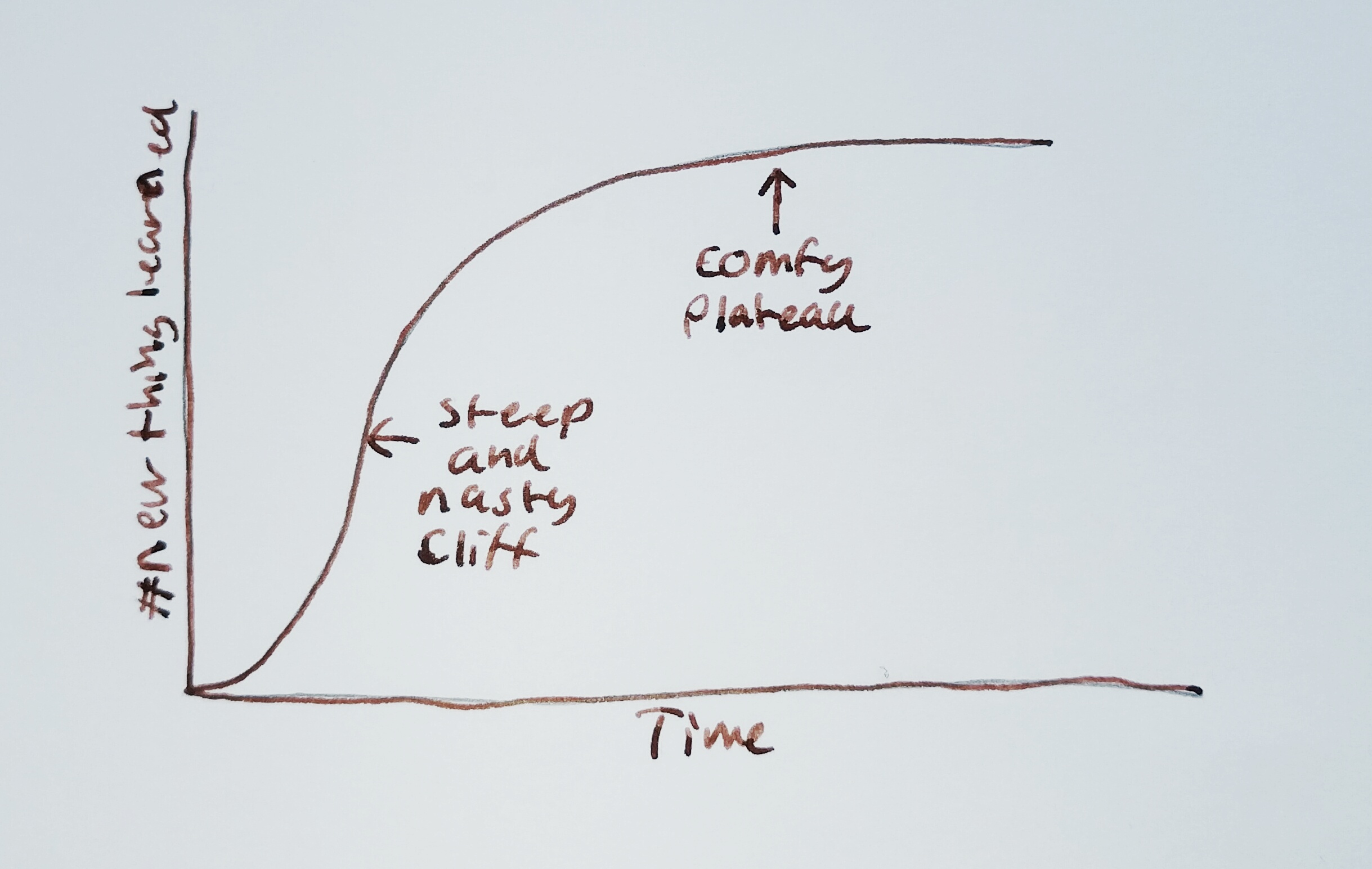Learning anxiety and flow
I’ve been learning things that push me past the limit of where I’m comfortable this week. It’s left me feeling pretty edgy1.
I find learning really enjoyable, to the point where I’ll do it as a leisure activity. The problem here is that it’s often not goal oriented; that means that the goal becomes something like finish this level when I’m doing a Code School course. I Know that the knowledge I’m getting is useful, but often the incentive becomes the goal. Finishing the lesson, getting the badge, becomes the goal. It’s like pressing the feeder-bar instead of building towards a more substantial goal.
This week I’ve been trying to get my head around Android development. It’s got a lot of moving parts. Most of which are new to me. There’s an IDE, Java, working with a real device, thread management, the list goes on. That gives a really steep learning curve.
hello world for a web page:
echo sup > index.htmlhello world for an android app?
Dave Wilcox on the relative difficulties of starting different sorts of projects.
I think that one of the things that attracted me to making things for web was that it was super easy to get started. Everything could be progressively enhanced to make it a bit less bad, but you could get a prototype up and running in almost no time at all.
I think that I’m remembering this with a bit too much of a rose tinted viewpoint. There was a lot of pain! Getting a server to work (at all), getting my css to work (at all), why was my JavaScript doing such strange things? All of these were super mysterious at that point. Over time I got a bit better, and the tooling got a bit easier. Things met in the middle and it felt comfortable.
That painful period where things didn’t work was also where I was learning the most new things. Trying a hundred wrong ways of doing a layout with CSS might not be that efficient, but I was getting foundational skills. The problem is that those foundational skills are usually on steep bits of a learning curve. Once the curve plateaus then it’s much more comfortable but there aren’t as many big gains in capacity.

I have let myself be in the comfy plateau for too long. I need to find a way to convince myself that being on a steep learning curve is fun.
On the graph above, the slope is how much new stuff you’re learning. Problem is that if you don’t make it to the comfy plateau then you don’t get a chance to consolidate and use those new things.
The shape of that curve must have some relationship to how many people get to the comfy plateau2. Curves that have lots of small steps are much more approachable than curves that have long scary steep bits. Those steps are like save game points. I made progress with web dev because I could stop at any point and I had something useful, whereas I’ve given up on mobile dev for the moment and I don’t feel like I’ve got anything usable in my mental-tool-kit.
I’ve never seen flow explained this way, but maybe when those steps become so small that they are virtually a straight line then it’s conducive to a flow state. The learning and application are so integrated that you don’t notice the difference3.
I need to design my learning so that it has a mixture of comfy plateau sections, hard steep bits and flow staircases. Some mixture of these must be ideal, and maybe with some mental training I’ll get more resilient to the fear caused by spending too long on the steep sections.
-
Pun not intended, but the similarity of the words might be telling ↩
-
The curve’s shape will be dependent on each person’s precedent skills. A lot of the steepness of a curve will be gaining the prerequisites. That said, there are probably some things that the curve is steep for everyone but I can’t think of an example. Maybe learning to speak for the first time? ↩
-
I’ve often been critical of architectural education for leaning too much on the apprenticeship model. This model does use that integrated mix of learn and apply. My criticism (briefly) is that there is a wide range of slope-angles that are possible when you take the learn apply steps and that arch education doesn’t make the slope steep enough. That wastes the students time (leading to a 5 year degree) and produces graduates without enough skill. I can write about what I think that actually means if anyone really cares. ↩